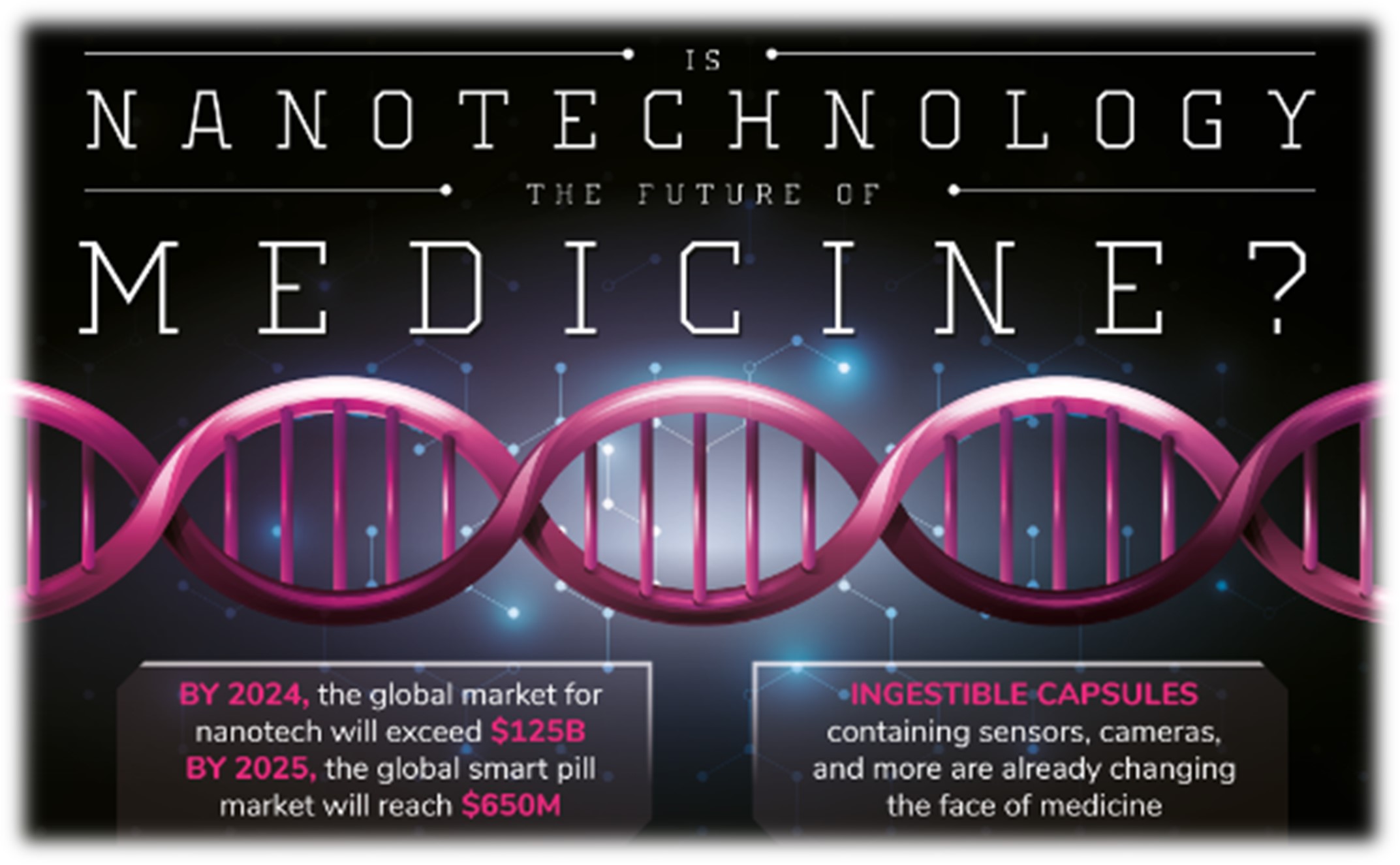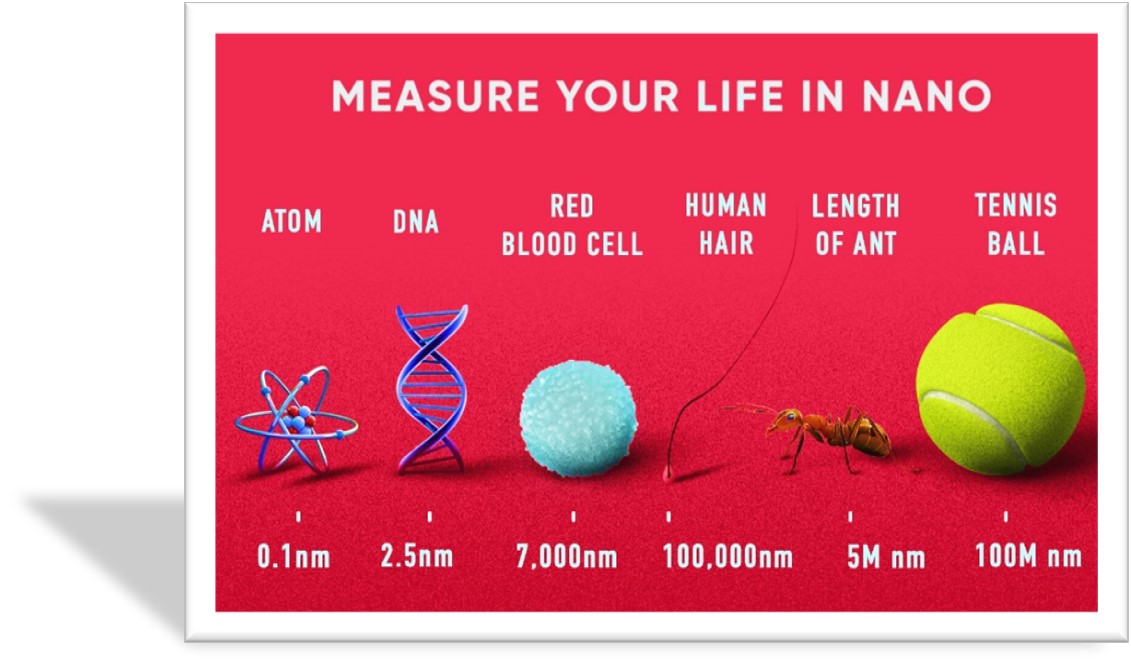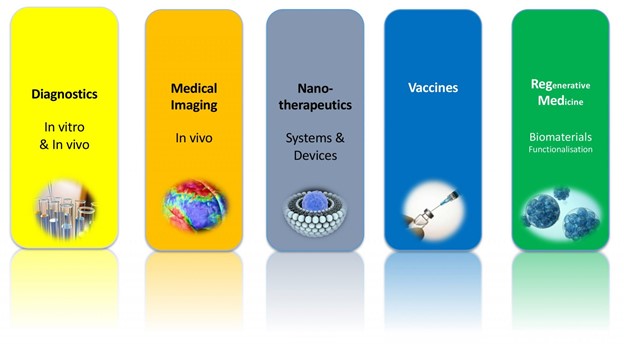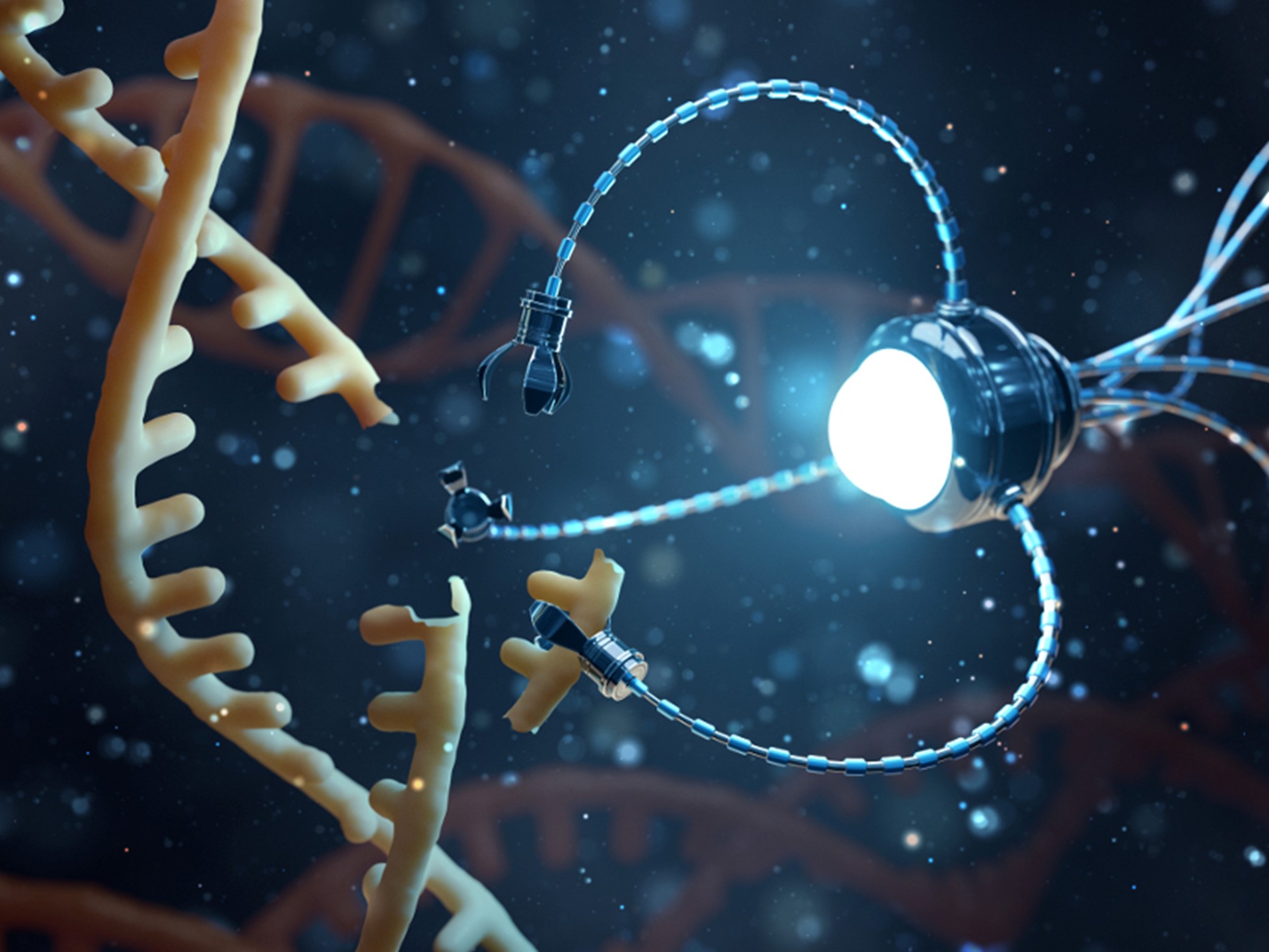Nanomedicine is the branch of medicine that deals with the use of nanoscale materials like nanorobots and biocompatible nanoparticles for monitoring, diagnosis, prevention, control, and treatment of diseases. The introduction of nanomedicine and its evolution in recent times have significantly benefited numerous scientific areas, especially in the development of new and improved pharmaceutical products.
In 2015, the sales of nanomedicines reached $16 billion, with at least $3.8 billion invested in nanotechnology R&D each year. Worldwide financing for rising nanotechnology expanded by 45% every year lately, with the sales of products surpassing $1 trillion in 2013. As the nanomedicine sector keeps on developing, it is anticipated to impact the global economy significantly. The day is not very far when conventional medicines will be replaced by nanomedicines, which has the potential to provide multiple benefits, including personalization, improved efficacy, enhanced solubility along with specific targeting ability.

Biocompatibility of Nanomedicine
A nanometer (nm) corresponds to one billionth of a meter, allowing scientists to take advantage of the quantum effects that occur naturally at the nanoscale level. Because of its minute size, nanomaterials have a high specific surface area in relation to their volume. This results in an increase in particle surface energy, making them highly reactive. Nanomaterials tend to absorb certain biomolecules when they come in contact with biological fluids, including lipids and proteins among others. The phenomenon of serum/plasma biomolecule adsorption forms a layer on the surface of colloidal nanoparticles termed as “corona”, forming the basis of one of the most significant interactions of nanoparticles with living matter. The size of nanomaterials matches most biological structures and molecules; hence it can be valuable for both in vivo and in vitro biomedical exploration and applications. This very convergence of nanotechnology and medicine has given rise to the interdisciplinary field of nanomedicine.

Applications
With the introduction of unique medicines for both diagnosis and treatment, nanomedicine holds promising changes in the field of clinical practice.
◦ Drug Delivery
The targeted and site-specific drug delivery is the most promising application of nanotechnology in medicine. The delivery of drugs for targeting brain tumors via the blood-brain barrier by modification and functionalization of nanoparticles can be regarded as one of the brilliant outcomes of this technology. Doxorubicin is one such example of a drug that is unable to cross the blood-brain barrier, but when integrated with nanoparticles of polysorbate 80 modified polybutylcyanoacrylate, its delivery to the brain is enhanced significantly.
◦ In Vivo Diagnosis: Smart Imaging
The use of nanomaterials as contrast agents helps in the visualization of different structures present within the human body, thereby helping clinicians to differentiate between diseased and healthy tissues, which also assists doctors in recommending proper treatment to patients. Computed tomography (CT), positron emission tomography (PET), magnetic resonance imaging (MRI) and fluorescence imaging are some of the most common modalities. Nanoparticles can potentially produce high contrast when engineered and localized within specific tissues. Scientists have also come up with a way of inserting nanoparticles into the affected body parts, which will make those respective parts of the body glow, exhibiting the tumor shrinkage or growth or any other organ trouble.
◦ Nanosensors
One of the other dimensions of lab-on-a-chip technology is nanotechnology-on-a-chip. Specific structures, molecules or even pathogens can be labeled via nanoparticles bound to a suitable antibody. Thousands of nanowires containing sensor chipsets, which are able to detect target proteins and other biomarkers left behind by cancer cells, could enable the diagnosis of cancer in its early stages from just a few drops of patient blood. Each of the nanowire detectors is primed to be sensitive to different cancer markers and therefore is tailored to each individual’s tumor for much better performance.
◦ Blood purification (Nano-Detoxification)
Blood disorder diseases (BDDs) are among the diseases which are caused due to hematopoietic system disorder. The cure rates of these diseases are low owing to the likelihood of recurrence and infection and also because of the low availability of correct type of bone marrow for transplantation. With the fast advancement of nanotechnology in the field of biomedicine, the purification model is based on functionalized iron oxide or carbon-coated metal nanoparticles with ferromagnetic or superparamagnetic properties. A force is exerted on the nanoparticles when an external magnetic field gradient is applied. This separates the particles (toxins, pathogen etc.) from the bulk fluid, thereby cleaning it from the contaminants.
◦ Tissue Engineering
The use of nanotechnology as a part of tissue engineering, helping in reproduction or repair of damaged tissue, if successful, may replace other conventional treatments like artificial implants or organ transplants. The fusion of two chicken pieces into a single piece with the use of a suspension of gold-coated nanoshells, further activated by infrared laser was demonstrated to a flesh welder. This method can also weld arteries during surgical procedures. Nanonephrology, the application of nanomedicine on the kidney is another such example.
◦ Medical Devices
A visionary goal of dealing with the construction of nanodevices is Neuro-electronic interfacing. The idea is to permit computers to be linked and joined to the nervous system, which requires building of such molecular structures that will permit detection and control of nerve impulses by an external computer. Development of one such nanoscale level enzymatic biofuel cell has been developed for self-powered nanodevices that utilize glucose from biofluids, including watermelons and human blood.

Challenges in Nanomedicine
There is a continuous rapid progression in the experimental advancement of nanomedicines; however, there still is prevalence of significant challenges in promoting these developments into clinically feasible therapies.
Nanotoxicology: Despite the novel applications of nanomedicine in clinical sciences at present, there are certain existing gaps that still need to be addressed. Although exciting expectations have been raised by nanomedicines for various medical problems, there is also an emergence of scientific challenges, especially due to dearth of knowledge and essential data regarding its pharmacodynamics, pharmacokinetics and toxicity. Post human body exposure behavior of these nanoparticles and their deposition up to a certain degree are among the crucial factors which must be considered for a successful approach of treatment. However, because of the current research zeroed in on these issues, we are presently nearer to fathoming them and to reaching "real" clinical solutions based on nanomedicine.

